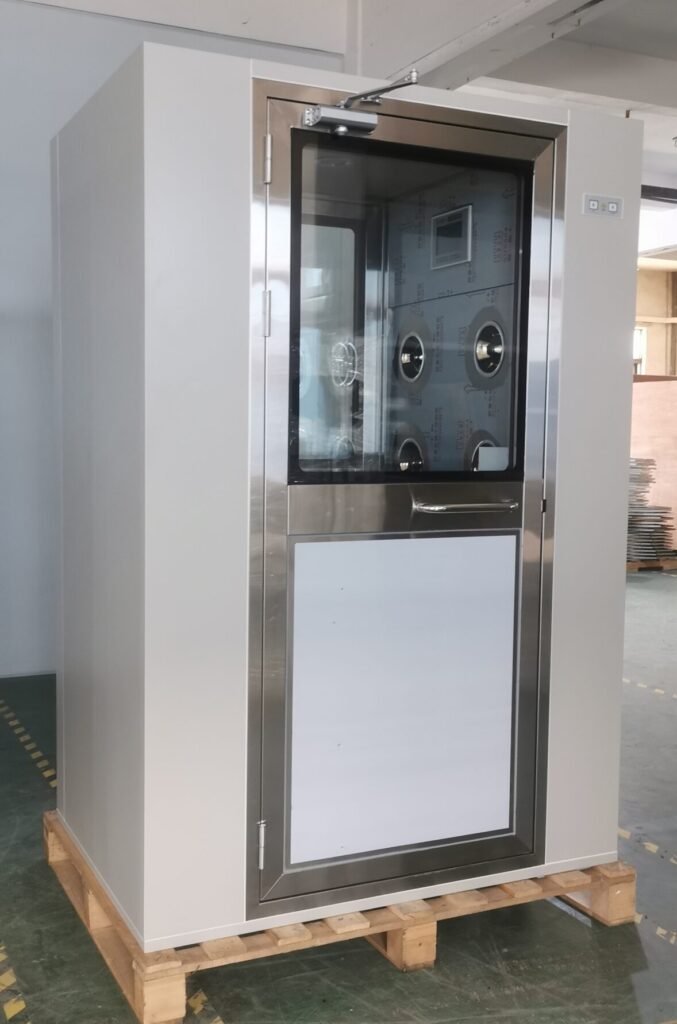SMT production workshops impose extremely stringent requirements on cleanliness and static control, as both aspects are critical to the quality of electronic components and overall production yield. The anti-static air shower serves as a critical safeguard at the first entry point, ensuring both cleanliness and static control are effectively maintained.
In this issue, Bihong Purification will clarify the specific requirements.
I. Cleanliness Requirements and the Key Role of the Anti-Static Air Shower
Air cleanliness typically needs to meet Class 10,000 (i.e., the number of particles ≥0.5μm per cubic foot of air does not exceed 10,000), with some high-precision production areas even requiring Class 1,000. This is achieved using high-efficiency particulate air (HEPA) filters and clean air conditioning systems.
Temperature and humidity should be controlled within the range of 20–26°C and 40%–60% relative humidity. Stable temperature and humidity not only prevent components from moisture or condensation but also help reduce static generation.
Pollutant control includes strictly prohibiting the introduction of dust, fibers, food, and other easily contaminating items. Personnel must undergo treatment in an anti-static air shower before entering the workshop.
This device uses high-voltage ionization to generate positive and negative ions in the air, neutralizing static charges on surfaces and effectively eliminating static electricity. Equipment, workbenches, and floors must also be regularly cleaned to avoid dust accumulation.

II. Collaborative Role of the Anti-Static Air Shower in the Static Protection System
All production equipment, workbenches, shelves, and anti-static floors must be reliably grounded to ensure timely dissipation of static electricity.
Operators must wear anti-static clothing, anti-static shoes, and grounded anti-static wristbands.
For environmental static control, in addition to the anti-static air shower eliminating human body static at the entry point, ion fans are needed to neutralize static charges in the air, maintaining workshop static voltage within a safe range (typically ≤100V) to prevent damage to sensitive components such as chips and capacitors.
Furthermore, all components must be transported and stored using anti-static packaging.
These requirements must be comprehensively implemented and maintained through hardware facilities (such as clean systems, grounding devices, and anti-static air showers), standardized operational procedures, and regular monitoring (e.g., static testers, particle counters).

